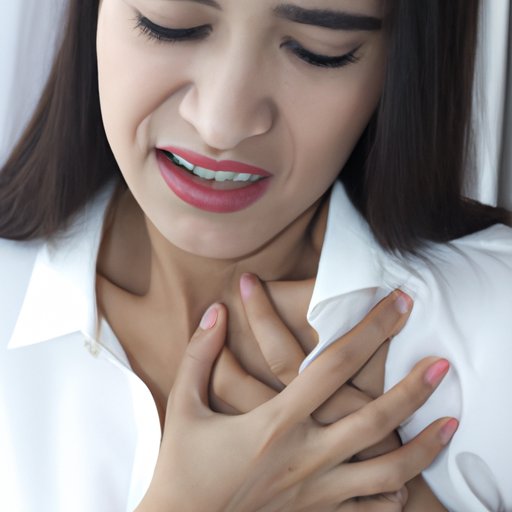
Introduction
Heart attacks are a serious health concern for both men and women, but the way the symptoms manifest can be quite different. Unfortunately, many women may not recognize the signs of a heart attack, which can put their health and lives at risk. This article aims to explore the importance of recognizing heart attack symptoms in women, what to look out for, and how early detection can make all the difference.
Identifying Heart Attack Symptoms in Women: A Guide for Early Detection
Early detection is crucial because the faster a heart attack is identified and treated, the better the chances of survival and recovery. In women, heart attack symptoms are often different from those experienced by men, and they can vary from person to person. Some of the most common symptoms that women experience during a heart attack include:
- Chest pain or discomfort
- Shortness of breath
- Upper body pain or discomfort in the arms, back, neck, jaw, or stomach
- Cold sweats
- Nausea or vomiting
- Lightheadedness or dizziness
- Fatigue or weakness
However, some women may experience atypical or subtle symptoms, such as discomfort in the jaw, neck, or back, or pressure or tightness in the chest. Because the symptoms may not be as obvious, it’s essential to be aware of the risk factors associated with heart attacks in women, including:
- High blood pressure
- High cholesterol
- Smoking
- Obesity or overweight
- Diabetes
- Sedentary lifestyle
Don’t Overlook the Warning Signs: Recognizing Heart Attack Symptoms in Women
The way heart attack symptoms in women manifest can be very different than in men. With women, there may be less chest pain and more atypical symptoms, which can be overlooked or dismissed as something else. However, dismissing the symptoms can have dangerous consequences, including permanent heart damage and even death. Seeking medical attention immediately is crucial, even if you are unsure about the symptoms.
Delaying medical treatment can significantly reduce the chances of recovery and increase the risk of complications. You should call 911 if you experience any symptoms that may indicate a heart attack, even if they are mild or come and go.
Why Heart Attack Symptoms Differ in Women – What to Look Out For
Biological differences between men and women contribute to differences in heart attack symptoms. Female hormones, such as estrogen and progesterone, play a role in the development of cardiovascular disease in women and can affect the symptoms of a heart attack. Other factors, such as age, race, and medical history, may also influence how heart attack symptoms manifest in women.
Heart Attack Symptoms in Women: Understanding the Unique Indicators
The spectrum of symptoms experienced by women during a heart attack is vast. Women are more likely to experience symptoms that are not associated with heart attacks in men. For example, women are more likely to experience shortness of breath, nausea, and vomiting. Women may also have a different type of heart attack, known as a non-ST-elevation myocardial infarction (NSTEMI).
The symptoms of an NSTEMI may be less severe than those of a traditional heart attack, but it is still a life-threatening condition that requires prompt medical attention.
Breaking the Myth: Debunking Common Misconceptions of Heart Attack Symptoms in Women
There are many false beliefs surrounding heart attack symptoms in women that can lead to a dangerous delay in seeking medical treatment. For example, women may believe that heart attacks are primarily a male problem or that they are too young to experience a heart attack. However, neither of these beliefs is accurate, and it’s essential to educate others about the unique ways heart attack symptoms manifest in women.
Healthcare providers may also be less likely to diagnose a heart attack in women because the symptoms are often different than the types of symptoms seen in men. More awareness and research are needed to address these misconceptions and improve early detection and treatment of heart attacks in women.
Early Detection Saves Lives: Top 7 Heart Attack Symptoms to Know in Women
The following are the top seven heart attack symptoms that women should know:
- Chest pain or discomfort
- Shortness of breath
- Upper body pain or discomfort in the arms, back, neck, jaw, or stomach
- Cold sweats
- Nausea or vomiting
- Lightheadedness or dizziness
- Fatigue or weakness
If you experience any of these symptoms, seek medical attention immediately. Acting quickly can significantly impact the chances of survival and recovery.
Conclusion
Recognizing the symptoms of a heart attack in women is crucial for early detection, prompt medical attention, and the best chances for survival and recovery. Women can experience different symptoms than men, and it’s essential to be aware of the risk factors associated with heart attacks in women. If you experience any symptoms that may be indicative of a heart attack, don’t hesitate to seek medical attention.





